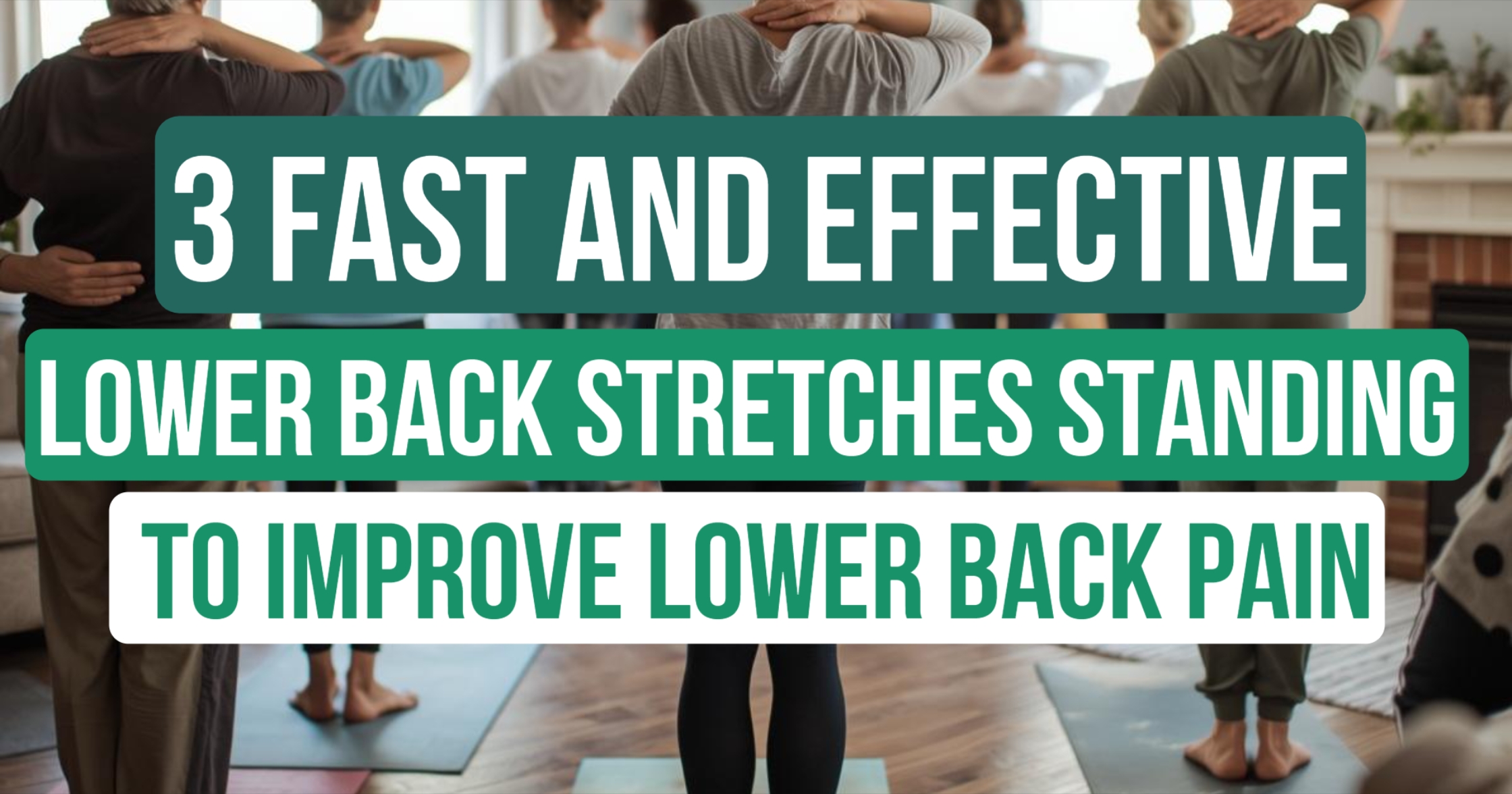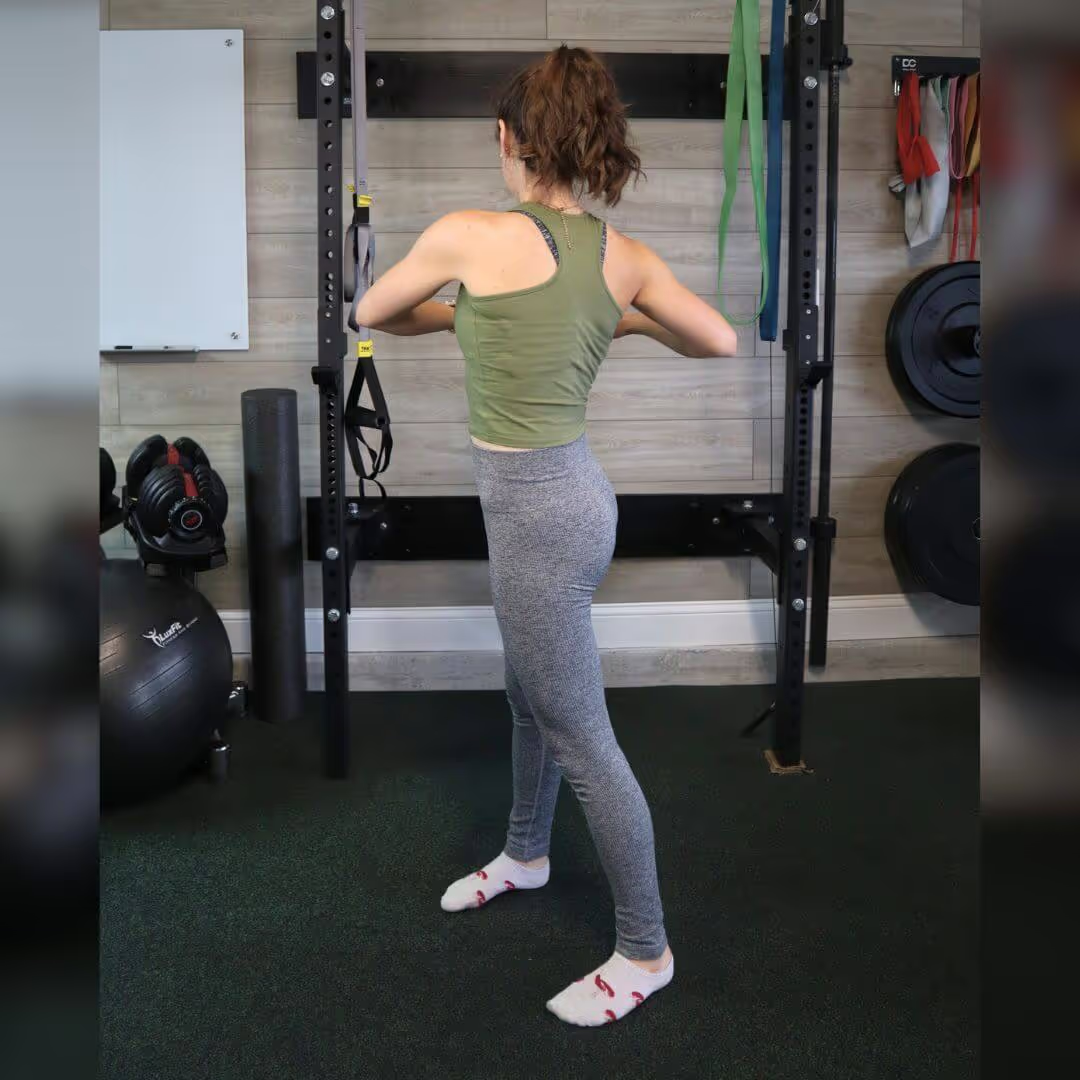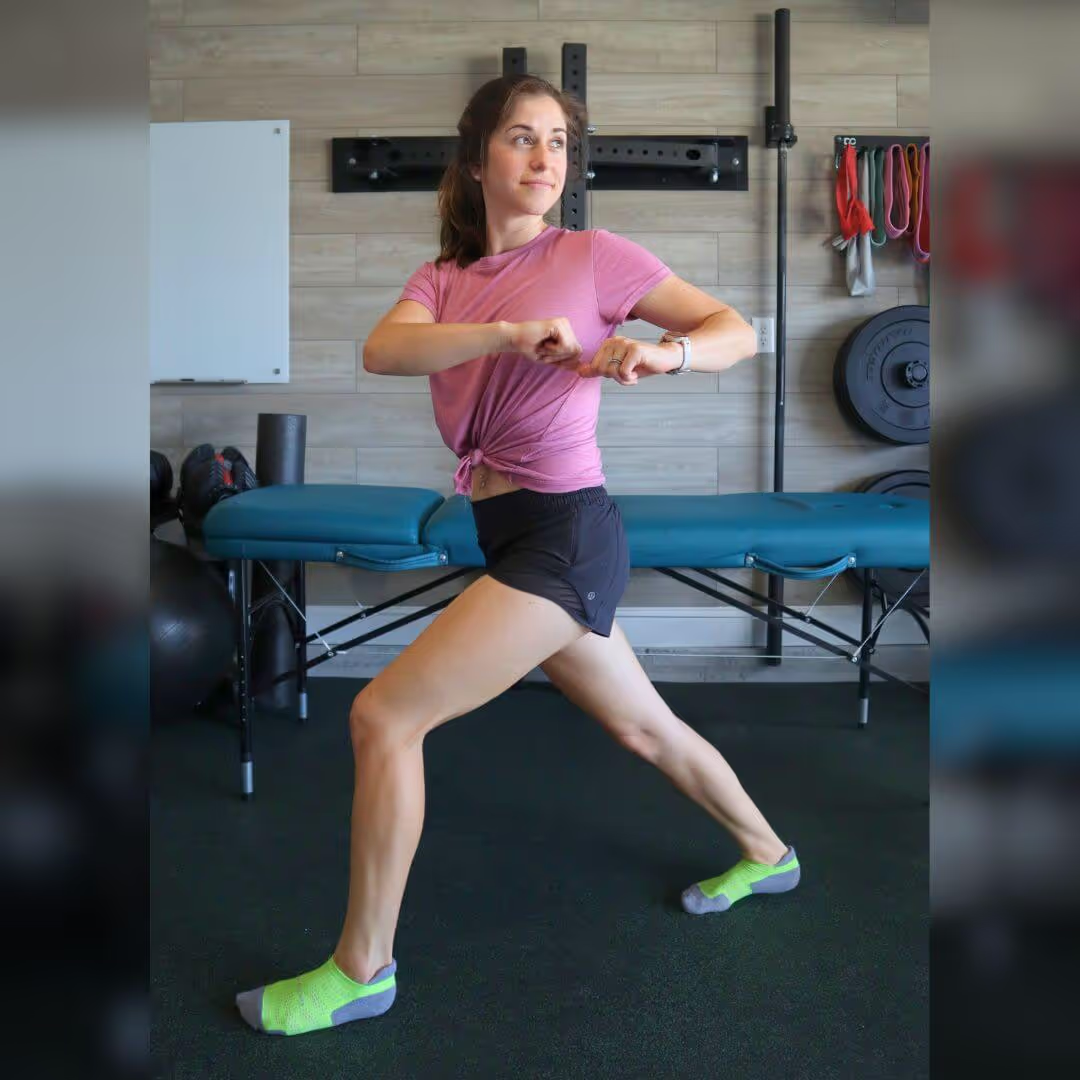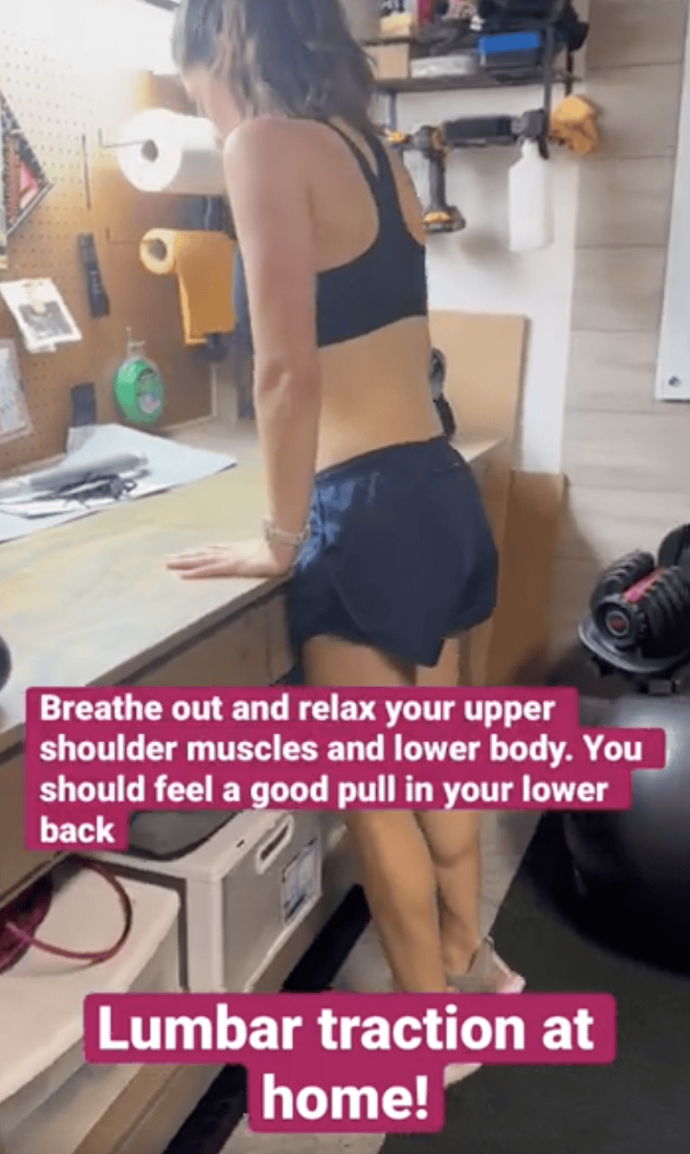
3 Standing Lower Back Stretches to Relieve Pain and Stiffness (No Floor Needed)
The three most effective standing stretches for relieving lower back stiffness and pain are the Standing L Stretch, Standing Lumbar Rotation, and Standing Hip Flexor Stretch. These exercises target the spine and hips to reduce discomfort caused by sitting or standing for too long. They can be performed in just 3 minutes without getting on the floor.
Why Standing Stretches Are Effective
As a father, husband, and full-time worker, I know that finding time to squeeze in a full workout or stretching session can be difficult. Many of us feel stiff and achy during the workday, but we don't have the time—or the desire—to roll out a yoga mat on the office floor.
Standing lower back stretches are a lifesaver for those of us on the go. Whether you are typing away at a computer on your lunch break or traveling, these movements allow you to target stiffness quickly.
In physical therapy, we have a saying: "Motion is lotion." This means that the more you move, the more lubrication your joints produce. Stiffness is usually the result of maintaining a sustained posture for too long, like sitting at a desk. By moving your spine through these standing stretches, your joints glide more freely, and your muscles work together to produce smoother, pain-free movement.
These stretches are great for lower back pain. If you are unsure what is causing your pain, make sure to check out my sciatica quiz to see if it’s your sciatic nerve or not!
Standing L Stretch

This is often my first recommendation because it simultaneously loosens your mid-back and low back. It uses gravity to decompress the spine while gently stretching the hamstrings.
How to perform it:
- Find something elevated and sturdy to grab onto, like the back of a chair or a countertop.
- Place your hands palms down on the surface and step your feet back until your arms are fully extended.
- Bend at the waist, dropping your chest toward the floor until you feel a stretch starting under your armpits and running down your back.
- Keep your legs straight and hold for at least 10 seconds.
Standing Lumbar Rotation

We usually think about bending forward and backward, but the ability to rotate is just as crucial for everyday activities. I call this "warming up for the sport of life". This move helps mobilize the spine and gets you out of that rigid, forward-facing posture we hold all day.
How to perform it:
- Start standing with your feet about shoulder-width apart.
- Keep your hips and feet planted in place while you twist your upper body from side to side.
- You can let your arms swing gently to use a little momentum/physics to help gain range of motion.
- Start slow and build up your range as you get more comfortable.
- Try doing 20 rotations throughout the day.
Standing Hip Flexor Stretch

If you sit for long periods, your hip flexors tighten up, which can pull on your lower back and cause pain. This standing variation targets the hips and adds a rotational component to release tension.
How to perform it:
- Start standing with your feet shoulder-width apart, then step forward with one foot so you are in a split stance (one foot in front, one behind).
- Pro Tip: If balance is tricky, position yourself near a wall or chair so you have something to grab.
- Keep your back leg straight and gently arch your lower back while leaning/lunging forward slightly.
- You should feel a stretch in the front of the hip on the trailing leg.
- For an added stretch, rotate your upper body toward the front leg.
- Try 10 reps on each side.
Bonus: How to Decompress Your Spine at the Kitchen Counter

If your back feels "compressed" or heavy from gravity, you can actually perform spinal decompression while standing. This is a great way to fight stiffness and the effects of body weight.
How to perform it:
- Find a sturdy countertop.
- Place your hands on the counter and lock your elbows straight.
- Shift your weight into your hands and lean forward slightly.
- Keep your toes on the ground, bend your knees slightly, and let the weight of your lower body "hang" to pull on the lower back gently.
- Breathe out and relax your back muscles.
Is Your Pain Just Stiffness or is it Sciatica?
These stretches are fantastic for general lower back stiffness. However, if you are experiencing sharp, shooting pain, numbness, or tingling traveling down your leg, you might be dealing with sciatica or a disc herniation.
If you are unsure what is causing your pain, I have created a free tool to help you figure it out. Take my "Do I Have Sciatica?" Quiz here.
If you do have sciatica, generic stretching might not be enough. You need a comprehensive guide to relief, recovery, and prevention. I have written a book specifically for this called Revision Sciatica. It covers everything from relief strategies to prevention for disc herniations and stenosis.
Get the Revision Sciatica Book here.
Consistency is Key to Long-Term Relief
I often tell my patients that frequency is key to eliminating low back pain. Doing these stretches once a month won't change much, but doing them every day for a few weeks will improve both discomfort and stiffness.
The goal is to find movements you can do comfortably to establish a base to work off of. Once you have mobility, you can move on to strengthening.
If you are ready to build strength and prevent future pain, I have created targeted workouts you can do at home. I created this PDF that gives you stretches you can do every morning for your leg or hamstring tightness.

Summary
Standing stretches are an effective way to reduce stiffness and back pain because they keep your joints moving and prevent the discomfort that comes from sitting too long. These simple movements can be done anywhere—at work, while traveling, or during daily routines—making them ideal for busy people. The blog highlights several easy standing stretches that improve mobility, decompress the spine, and ease tension in the lower back and hips. For those with more severe symptoms, like leg pain or numbness, the author recommends tools and guides to determine whether sciatica may be the true cause.
The three most effective standing stretches for relieving lower back stiffness and pain are the Standing L Stretch, Standing Lumbar Rotation, and Standing Hip Flexor Stretch. These exercises target the spine and hips to reduce discomfort caused by sitting or standing for too long. They can be performed in just 3 minutes without getting on the floor.
Why Standing Stretches Are Effective
As a father, husband, and full-time worker, I know that finding time to squeeze in a full workout or stretching session can be difficult. Many of us feel stiff and achy during the workday, but we don't have the time—or the desire—to roll out a yoga mat on the office floor.
Standing lower back stretches are a lifesaver for those of us on the go. Whether you are typing away at a computer on your lunch break or traveling, these movements allow you to target stiffness quickly.
In physical therapy, we have a saying: "Motion is lotion." This means that the more you move, the more lubrication your joints produce. Stiffness is usually the result of maintaining a sustained posture for too long, like sitting at a desk. By moving your spine through these standing stretches, your joints glide more freely, and your muscles work together to produce smoother, pain-free movement.
These stretches are great for lower back pain. If you are unsure what is causing your pain, make sure to check out my sciatica quiz to see if it’s your sciatic nerve or not!
Standing L Stretch

This is often my first recommendation because it simultaneously loosens your mid-back and low back. It uses gravity to decompress the spine while gently stretching the hamstrings.
How to perform it:
- Find something elevated and sturdy to grab onto, like the back of a chair or a countertop.
- Place your hands palms down on the surface and step your feet back until your arms are fully extended.
- Bend at the waist, dropping your chest toward the floor until you feel a stretch starting under your armpits and running down your back.
- Keep your legs straight and hold for at least 10 seconds.
Standing Lumbar Rotation

We usually think about bending forward and backward, but the ability to rotate is just as crucial for everyday activities. I call this "warming up for the sport of life". This move helps mobilize the spine and gets you out of that rigid, forward-facing posture we hold all day.
How to perform it:
- Start standing with your feet about shoulder-width apart.
- Keep your hips and feet planted in place while you twist your upper body from side to side.
- You can let your arms swing gently to use a little momentum/physics to help gain range of motion.
- Start slow and build up your range as you get more comfortable.
- Try doing 20 rotations throughout the day.
Standing Hip Flexor Stretch

If you sit for long periods, your hip flexors tighten up, which can pull on your lower back and cause pain. This standing variation targets the hips and adds a rotational component to release tension.
How to perform it:
- Start standing with your feet shoulder-width apart, then step forward with one foot so you are in a split stance (one foot in front, one behind).
- Pro Tip: If balance is tricky, position yourself near a wall or chair so you have something to grab.
- Keep your back leg straight and gently arch your lower back while leaning/lunging forward slightly.
- You should feel a stretch in the front of the hip on the trailing leg.
- For an added stretch, rotate your upper body toward the front leg.
- Try 10 reps on each side.
Bonus: How to Decompress Your Spine at the Kitchen Counter

If your back feels "compressed" or heavy from gravity, you can actually perform spinal decompression while standing. This is a great way to fight stiffness and the effects of body weight.
How to perform it:
- Find a sturdy countertop.
- Place your hands on the counter and lock your elbows straight.
- Shift your weight into your hands and lean forward slightly.
- Keep your toes on the ground, bend your knees slightly, and let the weight of your lower body "hang" to pull on the lower back gently.
- Breathe out and relax your back muscles.
Is Your Pain Just Stiffness or is it Sciatica?
These stretches are fantastic for general lower back stiffness. However, if you are experiencing sharp, shooting pain, numbness, or tingling traveling down your leg, you might be dealing with sciatica or a disc herniation.
If you are unsure what is causing your pain, I have created a free tool to help you figure it out. Take my "Do I Have Sciatica?" Quiz here.
If you do have sciatica, generic stretching might not be enough. You need a comprehensive guide to relief, recovery, and prevention. I have written a book specifically for this called Revision Sciatica. It covers everything from relief strategies to prevention for disc herniations and stenosis.
Get the Revision Sciatica Book here.
Consistency is Key to Long-Term Relief
I often tell my patients that frequency is key to eliminating low back pain. Doing these stretches once a month won't change much, but doing them every day for a few weeks will improve both discomfort and stiffness.
The goal is to find movements you can do comfortably to establish a base to work off of. Once you have mobility, you can move on to strengthening.
If you are ready to build strength and prevent future pain, I have created targeted workouts you can do at home. I created this PDF that gives you stretches you can do every morning for your leg or hamstring tightness.

Summary
Standing stretches are an effective way to reduce stiffness and back pain because they keep your joints moving and prevent the discomfort that comes from sitting too long. These simple movements can be done anywhere—at work, while traveling, or during daily routines—making them ideal for busy people. The blog highlights several easy standing stretches that improve mobility, decompress the spine, and ease tension in the lower back and hips. For those with more severe symptoms, like leg pain or numbness, the author recommends tools and guides to determine whether sciatica may be the true cause.




%20Blog%20thumbnails%204.avif)
